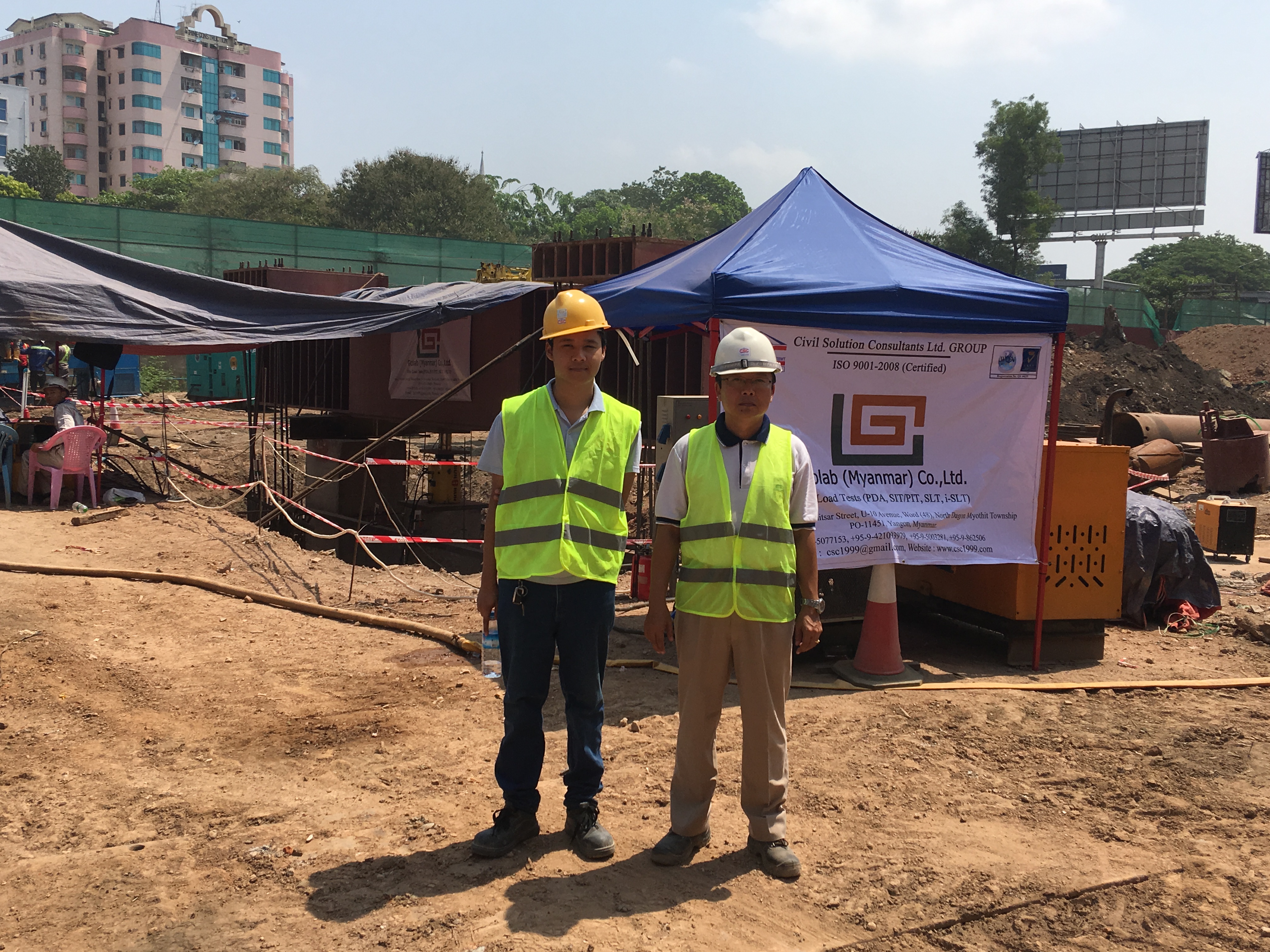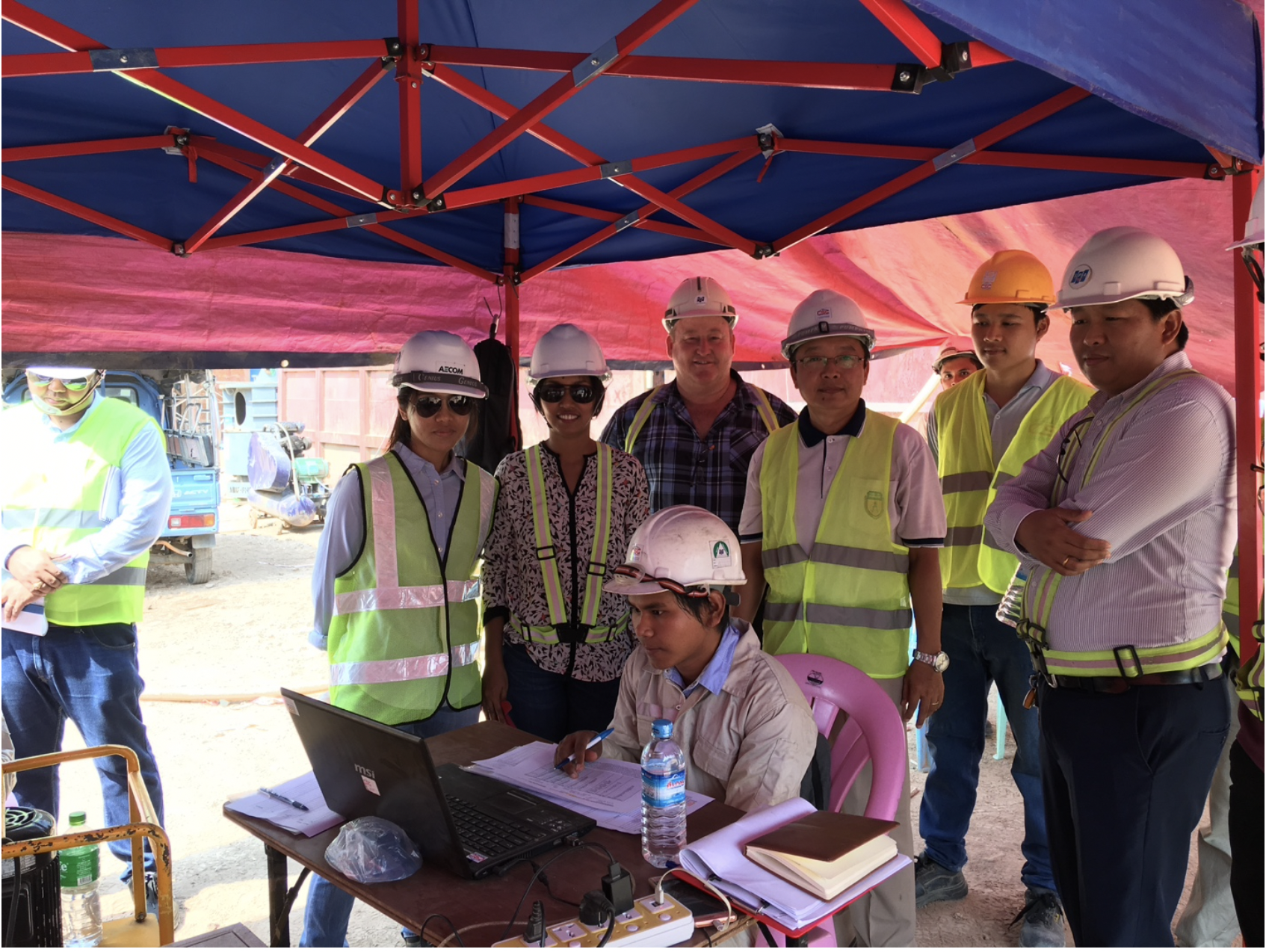Pile Load Test များပြုလုပ်ရာ၌ Static (တည်ငြိမ်) နှင့် Dynamic (လျှပ်တပျက်) ဟူ၍နှစ်မျိုးခွဲခြား ဆောင်ရွက်သည်ကို သိရှိပြီးဖြစ်ကြပါသည်။ Verification Pile Test, VPT သည် Static Pile Load Test အမျိုးအစားတွင် အကျုံးဝင်ပါသည်။
အထပ်မြင့်အဆောက်အဦများ ဆောက်လုပ်ရာတွင် စီးပွားရေး တွက်ချေကိုက်စေရန်အတွက် မြေအောက်ထပ် (Basement) များကိုထည့်သွင်းတည်ဆောက်လေ့ရှိပါသည်။ Basement နိမ့်သော (ဥပမာ-တစ်ထပ်) အဆောက်အဦများတွင် Pile Cutoff Level အထိ မြေကြီးတူးပြီးမှ Pile ရိုက်ခြင်း၊ Bored Pile တည်ဆောက်ခြင်း၊ Pile Load Test စမ်းသပ်ခြင်းတို့ကိုရံဖန်ရံခါပြုလုပ်လေ့ရှိသော်လည်း Basement Level များသော (ဥပမာ-နှစ်ထပ်၊သုံးထပ်) အဆောက်အဦများ အတွက်မူ Pile Cutoff Level ထိမြေကြီးတူးပြီးမှ Test Pile လုပ်ငန်း ဆောင်ရွက်ရန်မလွယ်ကူပေ။ သို့အတွက်ကြောင့် မူလမြေအနေအထား (Original Ground Level) တွင် Test Pile လုပ်ငန်းကို ဆောင်ရွက်နိုင်ရန်အတွက် Basement Pile Cutoff level နှင့် မူလမြေအနေအထား ကွာဟချက် (ဥပမာ – ပေ ၂၀၊ ပေ ၃၀ ခန့်) တွင် ရှိသည့် Extra Skin Friction (ton) ကိုတွက်ချက်ကာ အဆောက် အဦမှ Pile သို့သက်ရောက်မည့် SWL (Safe Working Load) တွင်ထည့်သွင်းပေါင်းစပ်၍ Pile Capacity ကိုစမ်းသပ်ကြရပါသည်။

(HPBC formerly CQHP) High-rise and Public Building Projects Committee ၏ စံညွှန်း သတ်မှတ်ချက် အရ အောက်ပါအတိုင်းတွက်ချက်လေ့ရှိပါသည်။
Working Load Test (WLT) = 2 x Safe Working Load (SWL) + Extra Skin Friction
Ultimate Load Test (ULT) = 3 x Safe Working Load (SWL) + Extra Skin Friction
မြေကြီးအမျိုးအစားနှင့် Pile အရွယ်အစားကိုလိုက်၍ Extra Skin Friction သည် 5-10 tons မှ 150-200 tons အထိရှိတတ်ပါသည်။
ရိုက်ထည့်သော Pile (Driven Pile) နှင့် စက်ဖြင့်ဖိထည့်သော Pile (Push Pile) များအတွက် Extra Skin Friction တွက်ချက်ခြင်းသည် မှန်ကန်မှုများသော်လည်း Bored Pile အတွက် မှာမူ လုပ်ငန်း ဆောင်ရွက်သည့်စနစ်ပေါ်မူတည်၍ ပြောင်းလဲမှုရှိတတ်ပါသည်။ တွင်းကြို တူး၍ ဆောင်ရွက်သော စနစ် (Pre-Bored System)၊ တွင်းကာပိုက် (Casing) ချ၍ ဆောင်ရွက်သော စနစ်၊ အဆောက်အဦအုတ်မြစ်ဟောင်း၊ သစ်မြစ် စသည် တို့ရှိနေ၍ ကျင်းတူး (Open-cut) ဖယ်ရှား ဆောင်ရွက်သော စနစ်၊ စသည်တို့ဆောင်ရွက်ခဲ့ ရသည့် မြေဝင်အနက် (Depth) အထိ Skin Friction မရှိနိုင်ပေ။ ဤအခြေအနေ ဖြစ်ပေါ်ခဲ့ပါက Pile Load Test မစတင်မှီ သက်ဆိုင်ရာ Designer နှင့်တိုင်ပင်ဆွေးနွေး ၍ လုပ်ငန်းလမ်းညွှန် (Method Statement) တွင်ပါရှိသော Pile Load Test တွက်ချက်မှုများကိုပြုပြင်ကာ CQHP သို့ပြန်လည်တင်ပြ ခွင့်ပြုချက်ရယူဆောင်ရွက်ခြင်းသည် အကောင်းဆုံးနည်းလမ်းဖြစ်သည်။
သို့မဟုတ်ပါက Extra Skin Friction ကိုလျှော့ချ၍ မူလ Pile Load Test ကိုပြုလုပ်ပြီး Verification Pile Test ကိုပါဆက်လက်ပြုလုပ်ရန် ခွင့်ပြုချက်ရယူဆောင်ရွက်ရမည် ဖြစ်ပါသည်။
Verification Pile Load Test ၏ ရည်ရွယ်ချက်သည် Extra Skin Friction မရှိနိုင်သည့် မြေဝင်အနက် (Depth) အထိမူလ Test Pile (Bored Pile) တည်ဆောက်ခဲ့သည့်ပုံစံအတိုင်း Bored Pile တိုင်တို (အထက်တွင်ဖေါ်ပြခဲ့သည့် ပေ၂၀၊ ပေ၃၀ ခန့်) ကို ထပ်မံတည်ဆောက်ကာ Pile Load Test စမ်းသပ်ခြင်း ဖြစ်သည်။
လုပ်ငန်း ဆောင်ရွက်ရပုံ အဆင့်ဆင့်သည် (HPBC formerly CQH) စံချိန်စံညွှန်းများနှင့် အပြည်ပြည်ဆိုင် ရာစံညွှန်း ဖြစ်သည့် ASTM D1143 (Static Maintained Pile Load Test For Deep Foundation) အတိုင်းဖြစ်သည်။ ထူးခြားချက်မှာ မူလ Pile Load Test သည် သတ်မှတ် Loading (ULT, WLT ton များများ) ကို အချိန်ကြာကြာ ထိန်းထားနိုင်ခြင်း အတွက်ရည်ရွယ်၍ စမ်းသပ်ဆောင်ရွက်ရခြင်းဖြစ်ပြီး၊ Verification Pile Load Test မှာမူ Extra Skin Friction Load (ton နည်းနည်း) ကိုပင် မထိန်းနိုင်၍ အချိန်တိုအတွင်း Pile Failure Stage သို့ ရောက်သွားနိုင်ခြင်း ပင်ဖြစ်သည်။
Pile Failure Stage အတွက် Pile Total Settlement Limitation ကို CQHP မှ အောက်ပါအတိုင်း သတ်မှတ်ထားပါသည်။
Safe Working Load Condition (SWL) => 12.5 mm (Maximum) in Pile Total Settlement
Working Load Test Condition (2xSWL) => 25.0 mm (Maximum) in Pile Total Settlement

Pile Failure Stage သို့ ရောက်သော်လည်း Pile Settlement Condition သာရှိသေးသည့်အတွက် Full Mobilization Stage (10% of Pile Diameter) သို့ရောက်ရန်ဆက်လက် စမ်းသပ်ပေး ရပါသည်။
ဥပမာ – 1000 mm Diameter Pile အတွက် Full Mobilization Stage သည် 100mm Total Settlement ဖြစ်သည်။

ဤဆောင်းပါးသည် လက်တွေ့အင်ဂျင်နီယာနယ်ပယ်တွင် ဖြစ်လေ့ဖြစ်ထရှိတတ်သော အခြေအနေ များကို ဗဟုသုတ မျှဝေချင်သည့် ဆန္ဒဖြင့်ရေးသားခဲ့ခြင်းဖြစ်သောကြောင့် အကယ်၍ အမှားအယွင်းများ ပါရှိခဲ့ပါက စာရေးသူ၏ တာဝန်သာဖြစ်ကြောင်း ဝန်ခံအပ်ပါသည်။
ဝင်းနိုင်ထွန်း (မြို့ ပြ) e-mail: csc1999@gmail.com; web: https://www.csc1999.com; Updated: 2-5-2020
References :
- (HPBC formerly CQHP) Guidelines (High-rise and Public Building Projects Committee)
- Standard Method Statement, ASTM D1143 (American Society for Testing Materials)
